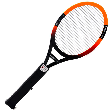Today, more than any other time in history, we are aware of how important it is to be eco-friendly—or green. To conserve energy and lessen our carbon footprint we drive smaller, more fuel-efficient cars; we turn our thermostats down and replace incandescent lightbulbs with fluorescent varieties; we recycle at home and at work; we use energy-efficient appliances, install low-flow shower heads and toilets to use less water, and buy organically-grown foods. Yet there is another way to be eco-friendly that most people never consider, and that is organic pest control. Some of the most environmentally friendly people I know still reach for a can of bug spray to rid their homes and gardens of pests, instead of opting to use organic pest control methods.
Exposure to pesticides have long been linked to health problems and diseases, such as birth defects, cancer, infertility, and encephalitis. If you're searching for ways to control the pest population in your garden and landscape, consider these organic options before using harsh chemicals that are not only harmful to the environment, but also detrimental to your health over long periods of exposure:
In instances where you need to use bug spray, seek out organic varieties, such as Orange Guard and Milk Spore. Both products can be found online. Search online for organic pest sprays, visit your local library and search the horticulture section, and visit your local cooperative extension office to find other solutions for controlling the pest population organically.

Zap Flying Bugs! Simply press the button and swing. Once the fly, wasp, mosquito, or bug touches the screen it is instantly zapped! Simple to use and totally effective. No cords to tangle; uses only two AA batteries. Check out Executioner Flying Bug Swatter today!
Termites look like little white ants. Don't be fooled, they can cause enough damage to make a house unlivable.
Discover MoreWhile moths can be annoying and disruptive to your summer outdoor party, certain species can be destructive and deadly to ...
Discover MoreGetting rid of termites is so important that if termites show up in a home inspection, it can potentially threaten the ...
Discover MoreThere are currently no comments for this tip. (Be the first to leave your comment—just use the simple form above!)
Copyright © 2026 Sharon Parq Associates, Inc.
Comments